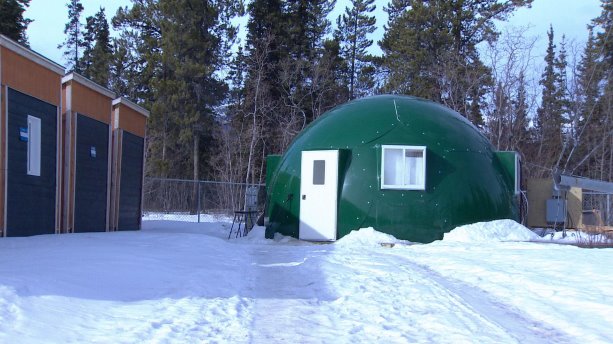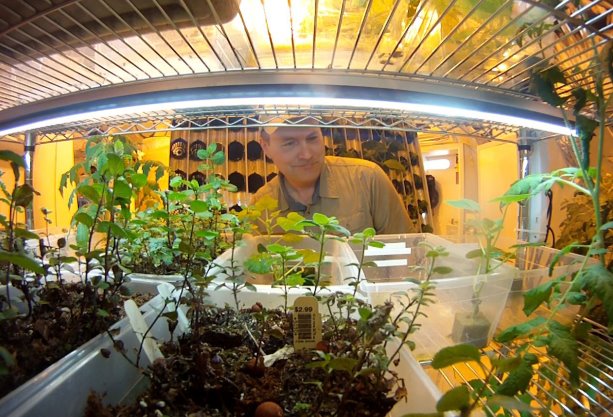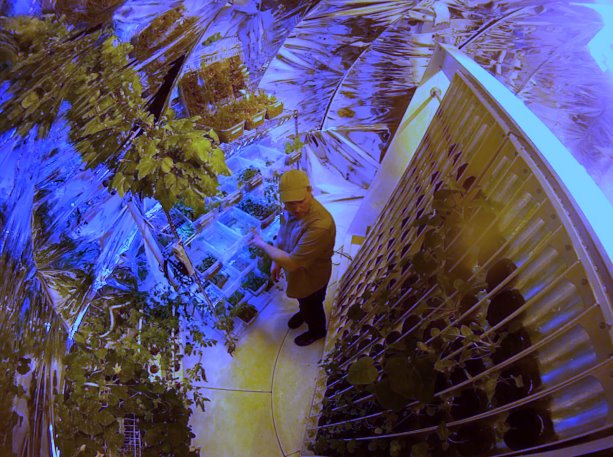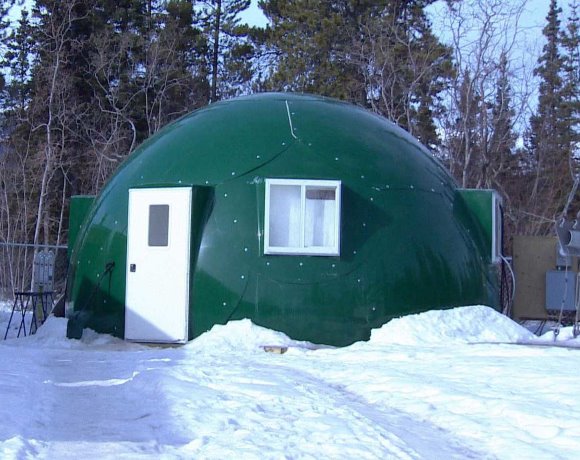Traditional greenhouses are built horizontally with transparent envelopes to take advantage of the sun. Inventor Glenn Scott wants to revolutionize cold climate greenhouse designs with Agridome, a dome-shaped structure that doesn’t rely on sunlight.
Scott holds a Master of Science degree in polar climatology at the University of Manitoba and has worked in Arctic environments as far away as Russia and Alaska.
"I spent a lot of time at remote research stations and I was exposed to the hardship of remote communities regarding how you supply people and keep them fed," he says. "One reason food is so expensive in the north is because of the cost of transportation. But in the north, heating costs for a greenhouse can rise to 75 per cent of your budget."
Scott piloted the Agridome in partnership with the Yukon Research Centre, which funded the project along with the Yukon government and the Canadian Northern Economic Development Agency.
"They say that sunlight is free, but for a northern greenhouse it’s very expensive," he says.
"If I engineer a greenhouse to let in sunlight, I’m also engineering it to let out heat. I chose a closed dome because they’re known to be highly energy efficient by virtue of their shape."
For the proof of concept program, Scott began with a dome kit made of plastic-fibreglass composite measuring 20 feet in diameter and 12 feet tall. The dome was assembled on a wooden platform in half a day using interlocking sections and bolts.
"We insulated the dome on the inside with two inches of blue polyethylene," Scott says. "Ideally, you would spray the interior with insulation, but since the dome was on loan from Hideaway Domes in Whitehorse, we wanted to give it back in original condition. I then covered the interior with highly reflective Mylar to concentrate all of the heat and light energy back into the centre of the dome and then designed a hydroponic unit to go in the centre of it."
Hydroponic agriculture requires no soil — only an inert medium, energy, water and plant nutrients. The plants were racked vertically along the interior of the dome to maximize the use of space.
Heat and light were supplied by 2,200-watt high-pressure sodium lights operating 18 hours per day. A water tank provided thermal mass by absorbing heat and then dispersing it daily for about three hours. An efficient space heater rounded out the heating regimen.
Scott nursed 800 plants including green peppers, basil, mini tomatoes and red Russian kale.
"My goal was to grow crops limiting energy usage to 3.5 kWh continuously," he says. "I actually got my energy usage down to 1.9 kWh even in the dead of winter when the temperature dropped to -35 or -40 C. I was still able to maintain greenhouse conditions inside."
The 1.5-year project concluded successfully at the end of January. Scott’s next pilot project, set for next January, involves a dome 50 feet in diameter to be built on the premises of the only egg producer in the Northwest Territories, Polar Egg in Hay River.
"We’re going to combine hydroponics with egg production to demonstrate that we can dramatically reduce water and energy consumption and the need for nutrients," says Scott.
Waste greenery from the hydroponics will be fed to the chickens and their waste will be placed into a bioreactor that will produce both heat and nutrients for the plants.
"We want to get the hydroponic system to a loop that’s between 80 and 90 per cent closed," Scott says. "If we can do that, we have a winner — with fresh eggs."

1/3
Agridome is a dome-shaped structure that does not rely on sunlight to operate and is designed to successfully function in cold climates.
Photo: Phillipe Morin
2/3
Glenn Scott holds a Master of Science degree in polar climatology at the University of Manitoba. He has piloted the Agridome in partnership with the Yukon Research Centre












Recent Comments
comments for this post are closed